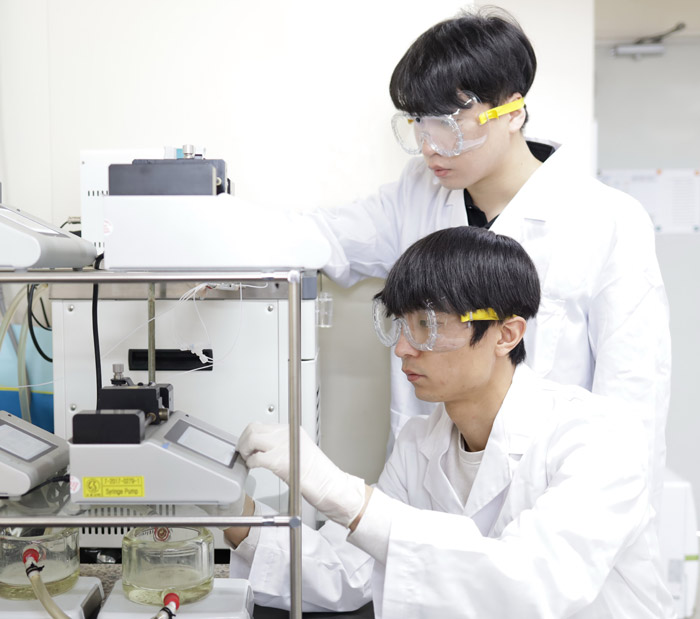Research Stories
Did Life Begin Within A Water Cage?
Water can act as a chirality amplifier. A plausible scenario for the chirality amplification process which led to the present homochirality life on our planet.
Chemistry
Prof.
SONG, CHOONGEUI
Prof. Choong Eui Song (Department of Chemistry) and his students have recently published a significant article, titled “Hydrophobic chirality amplification in confined water cages” in the world-renowned international journal, Nature Communications. In this study, they provided a plausible scenario for the chiral amplification process, which might help unlock secrets of homochirality on our planet. Homochirality is a fundamental component of molecular recognition in biological systems.
Enantiomers (optical isomers) are chiral molecules that are mirror images of one another. They are also non-superimposable to one another. For all intents and purposes, pairs of enantiomers have the same Gibbs free energy. Thus, both enantiomers of a compound will form in equal amounts (a racemic mixture) when we synthesize them in the laboratory under non-chiral environment.
However, all living forms on Earth consist of single enantiomer of molecules like D-sugars and L-amino acids, which are basic components for DNA, RNA and proteins (i.e., homochiral). Although homochirality in life forms is found in all living things from wild grasses to human beings, its origin still remains as an unsolved mystery. Most theories for biological homochirality require a chiral amplification mechanism that acts to enhance a small initial asymmetry.
Prof. Song’s research team discovered that water can act as a chirality amplifier and thus the enantioselectivity of an asymmetric catalytic reaction can be greatly amplified in the aqueous microdroplets. Flow and batch reactors were evaluated to confirm this general water-induced hydrophobic effects on enantioselectivity. They presumed that this water-enabled chirality amplification stems from the hydrophobic hydration effect, which enforces proximity of the hydrophobic catalyst and substrates in confined water cages and consequently leads to a more compact transition state.
Prof. Song says, “This remarkable observation could provide some inspiration for developing new strategies to enhance the enantioselectivity of some catalytic reactions and thus has the potential to open a new chapter in the field of asymmetric catalysis. In addition, considering that the aqueous environment of early Earth resembled aerosol droplets (mist, clouds, and spray, etc.) at the surface of oceans, our results would also offer one of the reasonable scenarios for the chirality amplification process which led to the present homochirality life on our planet. Furthermore, it is likely that the limited diffusion of enantio-enriched products in such droplets might provide a chance to participate in a self-replicating, evolvable system in the prebiotic era.”
*Article title: Hydrophobic chirality amplification in confined water cages” Nature Communications, 10, 851 (2019) (DOI: 10.1038/s41467-019-08792-z).
Figure 1. Photos of asymmetric catalytic reaction under on-water conditions. a. before reaction; b. during reaction; c. after reaction.
Figure 2. Flow microchip reactor
Figure 3. (a) Flow microreactor system (b) Plug volume can be controlled by varying the relative flow rates of the two phases (c) Effect of biphasic microfluidic conditions


